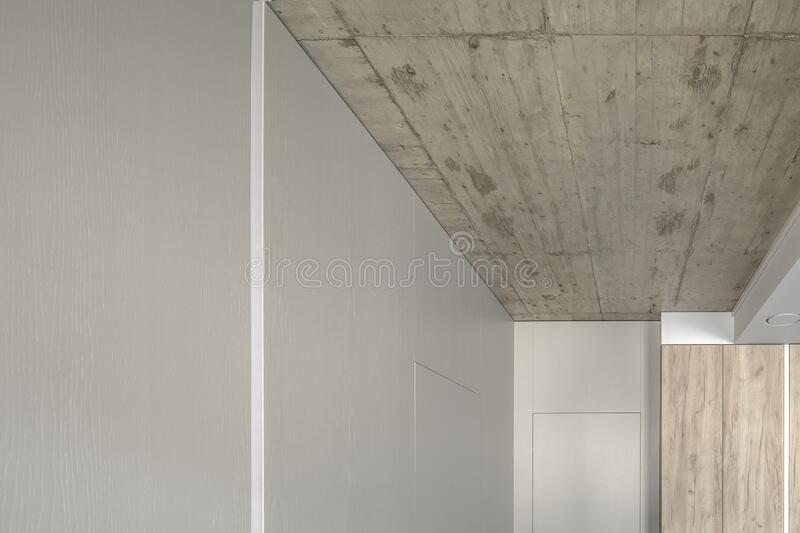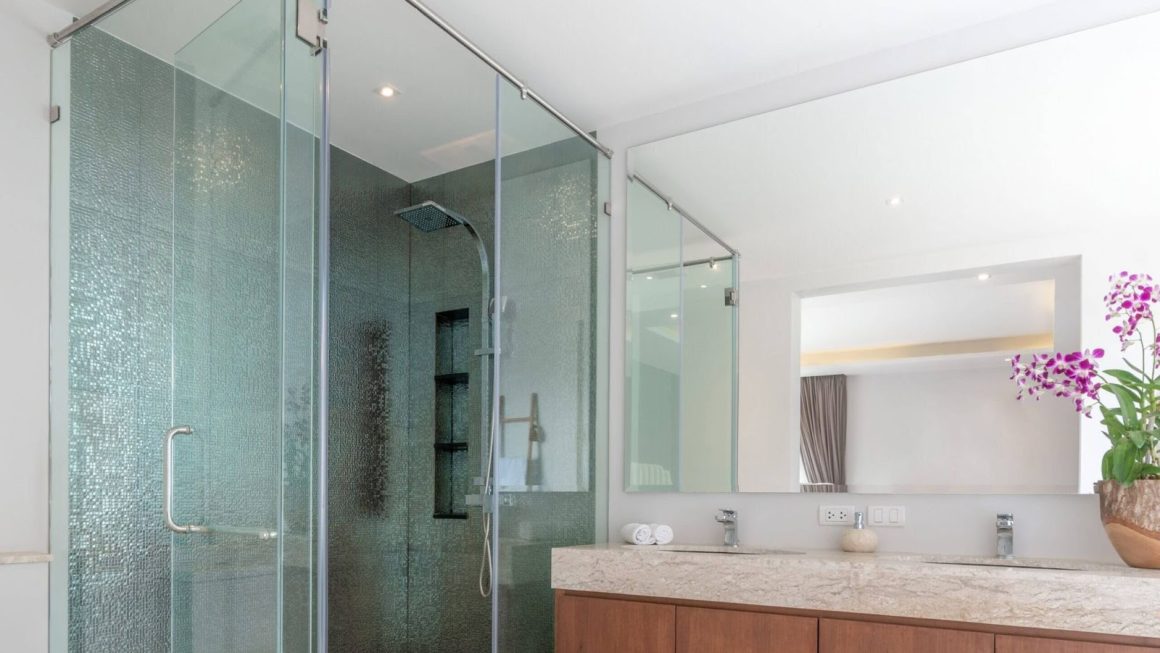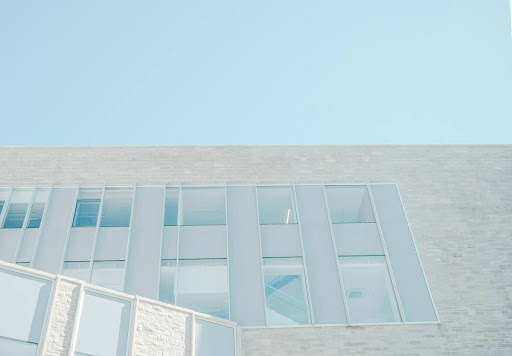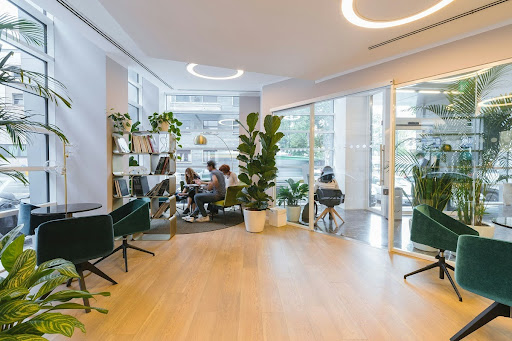CONTENT
- Classic ceiling textures
- Decorative texture
- Texture canvas cost
- Rules for choosing and combining textures
- Examples in the interior
- Alternative ways to make a textured ceiling
When choosing the appearance of ceiling textures, not only color and pattern are taken into account. The texture is also important. This is understood as the structure of the surface, the degree of refraction of light and visual similarity with other finishing materials.
CLASSIC CEILING TEXTURES
The most common textures are: glossy, it is also called mirror, matte and satin. Let’s consider each in detail.
GLOSSY
The ceiling surface is smooth, reflecting the light and the interior. Low ceilings are visually raised. The room becomes brighter. The glossy texture is made only on PVC, polyvinyl chloride, film.
Mirrored ceilings are installed in kitchens, living rooms, entertainment centers, etc. And in long corridors it is better to refuse the lacquer texture – it will look narrower. Suitable for modern interiors and Art Nouveau rooms.

MATT
Such ceiling textures are made with fabric and film. The matte texture absorbs light and is smooth and rough to the touch. The texture of the stretch ceiling does not attract attention, therefore it emphasizes the color or pattern. The white surface resembles plaster or whitewash in appearance. Matte canvases are suitable for bedrooms, nurseries, living rooms, and offices. Smooth ones are also used in the kitchen. Combine with classic, ethnic style or minimalism.
SATIN
In terms of light reflection, it occupies an intermediate place between the previous two. Despite the name, such a canvas is made only from film. It has a subtle satin-like texture. Depending on the lighting, the shade of the coating changes. The ceiling looks luxurious and sophisticated. It is used mainly in residential areas. It is less suitable for kitchens, since it is more difficult to clean due to the texture. Satin canvases are installed in rooms with a minimalist and classic style.

DECORATIVE TEXTURE
Stretch Ceiling textures are divided into two types:
- foil, which is embossed during production;
- fabric with a coating that imitates the surface of any material with special paints.
Textured canvases for stretch ceilings are heavier and thicker than ordinary ones, since they have an additional layer. With some textures, the surface is not smooth. This feature makes it harder to clean. But the canvas looks more interesting and transforms the interior of the room.
TRANSLUCENT
The ceiling is made of a film or fabric that partially transmits light. Above its level, LED or fluorescent lamps are fixed. When they are turned on, the entire ceiling appears to be illuminated. The room seems to be higher. Sometimes the backlight is colored. This is a laconic and original solution. But for implementation, a high ceiling is required: its level decreases by no less than 40 centimeters. It is necessary to maintain a certain distance between the canvas and the lamps, otherwise the PVC film will begin to melt. The material comes in different thicknesses. The thinner it is, the more light it lets through.
SILK
A subdued sheen lends sophistication to the canvas. Suitable for bedrooms, children’s rooms and living rooms, makes them more comfortable. It is recommended to choose light colors, because with dark the ceiling looks heavy and oppressive. Pastel colors add a romantic mood. The golden finish adds luxury.
MARBLE
The canvas imitates natural stone, the natural palette is also chosen. The interior looks luxurious and solemn. Such a textured ceiling is suitable for living rooms, conference rooms and other ceremonial rooms in classic, baroque or antique styles. It is also used in luxury pools. The ceiling made of PVC film is cheaper than finishing with natural marble. At the same time, it is much lighter, which reduces the load on the supporting structures.
MOTHER-OF-PEARL
The coating resembles gloss or metal, but iridescent overflows are added. The material is shinier, but less reflective of the surroundings. Has a “chameleon” effect – changes color depending on the viewing angle and lighting. Shades are colder than other textures. The mother-of-pearl stretch ceiling adds volume to the room. The surface suits elegant and sophisticated interiors. Combined with metal, crystal, glass and other shiny surfaces. To show all the beauty of such a ceiling, it is important to choose the right lighting.
PEARL
This texture is characterized by warm tones. Gloss is weak, the surface can be called semi-matt. The overall impression is a more cozy, intimate and relaxing environment than with a mother-of-pearl ceiling. Looks especially good in light colors, although bright warm palettes are also possible.
VELVET
Another fabric imitation. The surface absorbs light and does not produce glare. A room with such a ceiling looks sophisticated and mysterious. As with silk, it is not recommended to choose dark colors. Suitable for fusion, baroque, rococo, eclectic styles. Combined with velvety upholstery of upholstered furniture, natural parquet, antique paintings and figurines.
PATTERNED
The relief is applied to the PVC foil during the production process. For this, two methods are used: vacuum and thermal. And the patterns themselves can be depressed or convex, small or larger.
The assortment offered differs from manufacturer to manufacturer. But the most common patterns are:
- small flowers;
- leaflets;
- butterflies;
- circles or ovals;
- Venetian plaster;
- small cells resembling a mosaic;
- random interlacing of threads;
- imitation of various types of fabrics (for example, brocade, suede or corduroy).
METALLIC
The surface is shiny, but not mirrored like glossy. In the rays of light, it changes its shade and shimmers. And in the twilight, the effect of grain appears. This texture is based on vinyl film. Often imitates precious metals (platinum, gold, silver), but it can also be produced in other colors. Used in high-tech and minimalist styles.
WITH SEQUINS

This is a fabric cloth with particles that refract light. The surface resembles a scattering of precious stones, which gives the room a luxurious and exclusive look. The ceiling textures will catch the eye, this must be taken into account when developing a design. This texture is used in residential premises, business centers, restaurants and expensive hotels.
Read also: How To Install Vinyl Siding In 15 Easy Steps
CEILING TEXTURE CANVAS COST
The price depends on the manufacturer and the seller, as well as on the complexity of the installation. Multi-tiered structures are more expensive, you have to pay extra for each lighting fixture. But in general, the cost per square meter is approximately the following:
- translucent ceiling textures – film 250-900 rubles, fabric 1,500;
- patterned – 400-500; silk – 500-850;
- metallic – 500-1,000;
- marble – 1,000-1,500;
- velvet – from 1,000;
- “Chameleon” – from 1,500;
- with sparkles – from 2,000.
Classic canvases are cheaper:
- gloss – from 200 rubles;
- matte – from 100;
- satin – from 180.
RULES FOR CHOOSING AND COMBINING CEILING TEXTURES
Different textures are used not only individually but also together. The right combination gives each of them more expressiveness.
There is another advantage of the ceiling with different textures. The largest width of the polyvinyl chloride canvas is a little more than 3 meters. This is enough for standard rooms. For large rooms, film strips are welded. But the texture is thicker, and the seam is more noticeable. You can avoid it by combining ceilings with different surfaces. The most common combination is matte canvas with others. Satin, silk or velvet in such a frame looks like a painting, especially if you add photo printing. With glossy, the effect of a two-level ceiling is obtained. Unlike a real multi-tiered structure, a tall building is not required.
From a translucent canvas, as a rule, an insert is made of a round, rectangular or more complex shape. When the backlight is on, it looks like a window in the ceiling . When choosing combinations, the furnishings of the room as a whole are also taken into account. The general style, other finishing materials and furniture matter.
EXAMPLES IN THE INTERIOR
The photo gallery will help you imagine how the textured stretch ceiling will look in the room. But if possible, it is better to watch the samples live to appreciate the play of light.
ALTERNATIVE WAYS TO MAKE CEILING TEXTURES
Embossed stretch fabrics are more expensive than conventional ones. But if you wish, create a texture with your own hands. This will require special structural paints. They contain small filler particles. The paint is heavier and is applied with a spatula. Then the pattern is made using one of the following tools:
- notched trowel;
- metal sponge;
- hard brush;
- decoration roller with cut-out pattern;
For the same purposes, textured plaster or putty is used. It is heavier and contains larger particles, with the help of which it can simulate other surfaces and give additional relief. Fabric ceiling textures are also suitable for texture, as they can be painted. But you only need to paint in one layer. Otherwise, the canvas becomes heavier and may sag, especially with large rooms.



